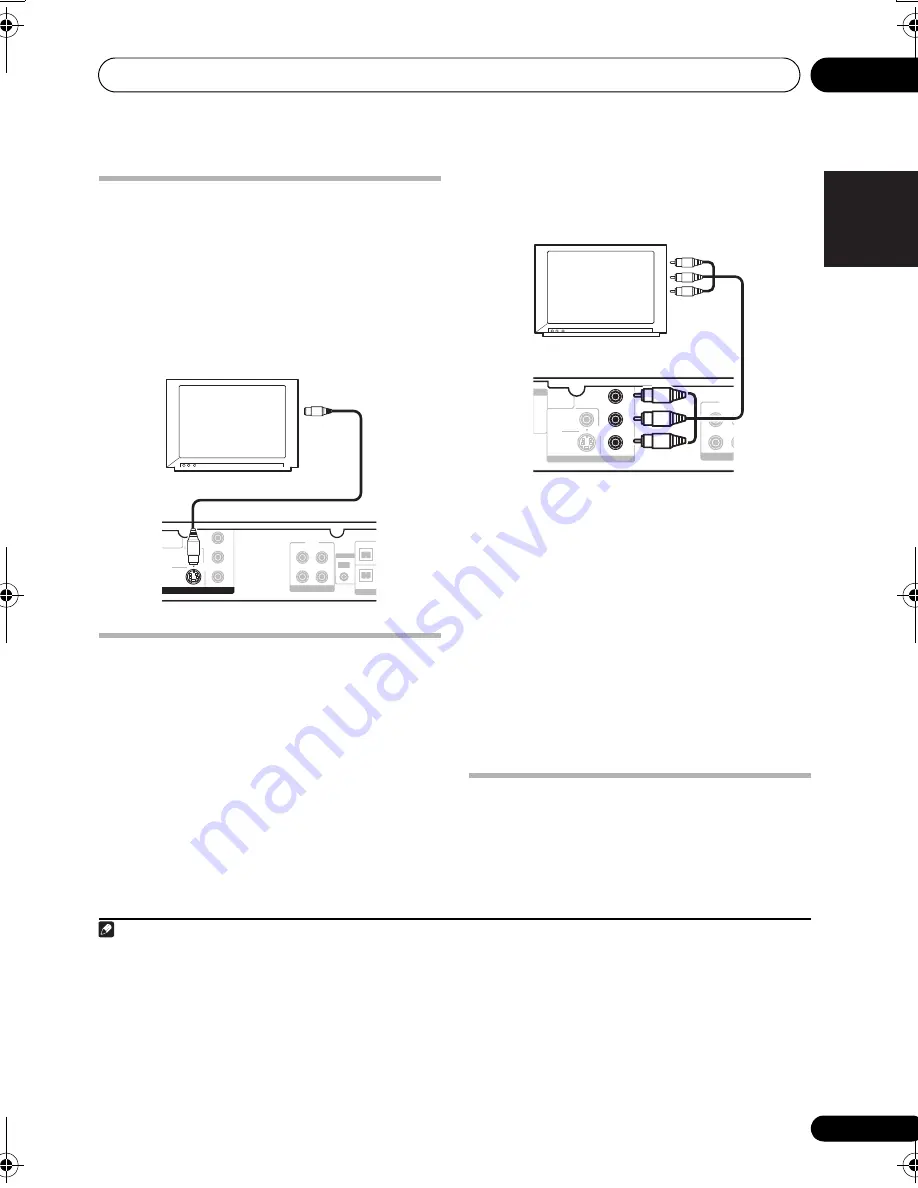
Other connections
08
33
En
Engli
s
h
Françai
s
Deut
s
ch
Nederland
s
Italiano
E
s
pañol
Connecting the S-video output
If your TV has an S-video input, you can use this
instead of the standard video output for a
better quality picture.
•
Use an S-video cable to connect the S-
VIDEO OUT to an S-video input on your TV.
Line up the small triangle above the jack with
the same mark on the plug before plugging in.
Connecting using the
component video output
If your TV has component video inputs, you can
use these instead of the standard or S-video
video outputs for a better quality picture.
1
•
Use a component video cable to connect
the COMPONENT VIDEO OUT to a set of
component inputs on your TV.
About progressive scan video
Compared to interlace video, progressive scan
video effectively doubles the scanning rate of
the picture, resulting in a very stable, flicker-
free image. Progressive scan video is available
only from the component video output.
Compatibility of this player with
progressive-scan and high-definition TVs.
This player is compatible with progressive
video Macro Vision System Copy Guard.
2
Connecting using HDMI
If you have a HDMI or DVI (with HDCP)
equipped monitor or display, you can connect
it to this player using a commercially available
HDMI cable for high quality digital video.
3
Note
1 The component video output is switchable between interlaced and progressive formats. See
Video Output settings
on page 27.
SURRO
FRO
SPE
AUDIO
R
L
R
R
L
R
VIDEO
Y
C
R
/
P
R
C
B
/
P
B
COMPONENT
VIDEO
S-VIDEO
OUT
LINE
IN
OUT
CONTROL
VIDEO OUT
TV
To S-video
input
2 Consumers should note that not all high-definition television sets are fully compatible with this product and may cause
artifacts to be displayed in the picture. In case of 525 progressive scan picture problems, it is recommended that the user switch
the connection to the ‘standard definition’ output (Interlace). If there are questions regarding our TV set compatibility with this
model, please contact our customer service center.
3 • An HDMI connection can only be made with DVI-equipped components compatible with both DVI and High Bandwidth
Digital Content Protection (HDCP). If you choose to connect to a DVI connector, you will need a separate adaptor (DVI
HDMI)
to do so. A DVI connection, however, does not support audio signals. Consult your local audio dealer for more information.
• Depending on the component you have connected, using a DVI connection may result in unreliable signal transfers.
• When you change the component connected to the HDMI output, you will also need to change the HDMI settings to match
the new component (see
Video Output settings
on page 27 to do this).
AUDIO
R
L
VIDEO OUT
VIDEO
Y
C
R
/
P
R
C
B
/
P
B
COMPONENT
VIDEO
S-VIDEO
LINE
IN
L 75
Ω
TV
To component
input
XV-DV-370.book 33 ページ 2007年2月2日 金曜日 午後8時9分
















































